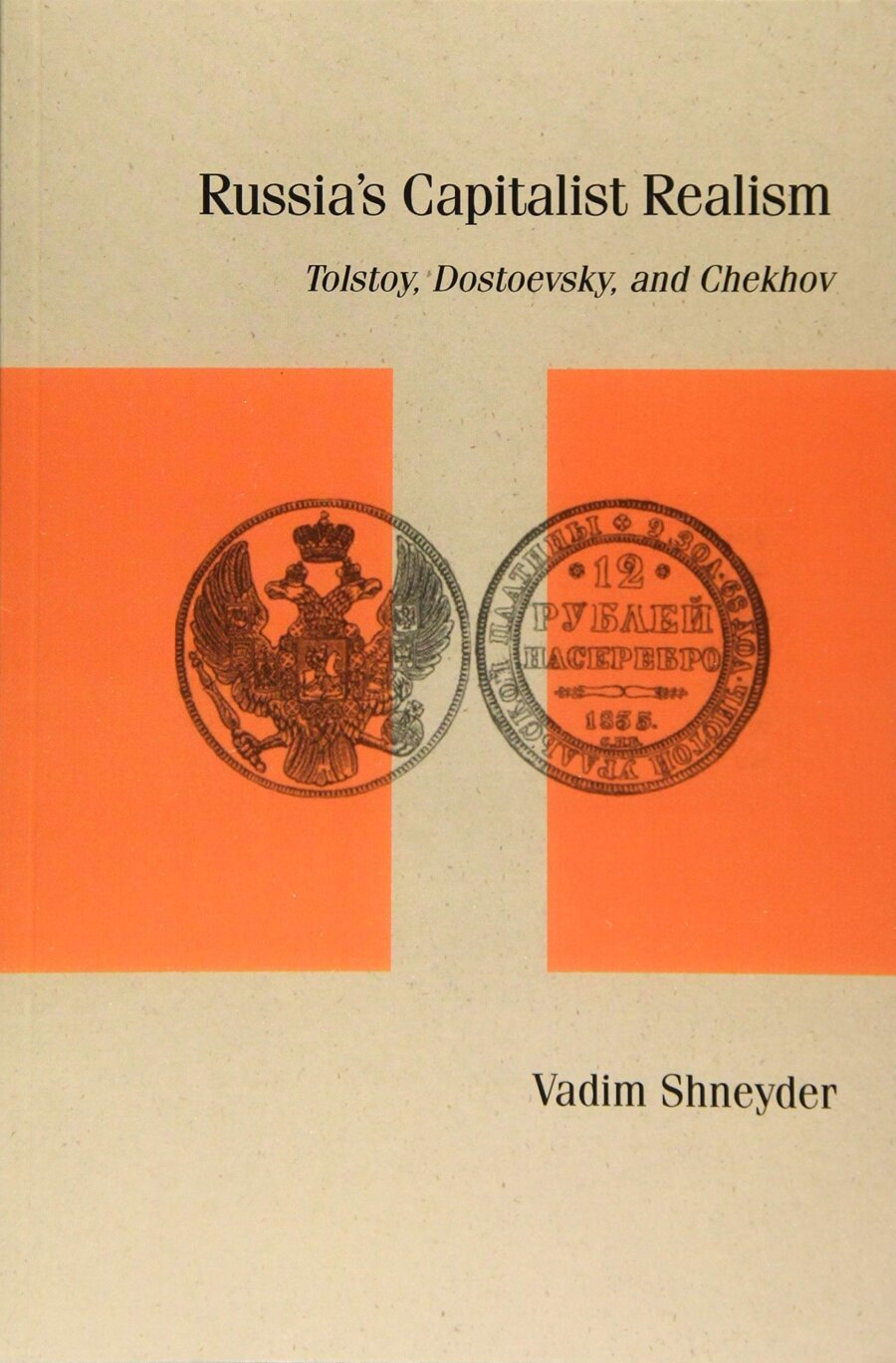Russia’s Capitalist Realism

Russia’s Capitalist Realism. Tolstoy, Dostoevsky, and Chekhov. Vadim Shneyder. Evanston: Northwestern University Press, 2021.
Russia’s Capitalist Realism breaks new grounds in the studies of nineteenth-century Russian literature by illustrating the way economics is portrayed in these works. By examining these economic factors, we gain new insights into Russia’s literature multifaceted response to a whole complex of cultural, economic, and political changes from the Great Reforms of Alexander II (1861-74) to the end of the nineteenth century. Russian literature, particularly the novel, was a key site for public discourse about this period of transition.
In the decades following the emancipation of serfs in 1861, million of peasants found seasonal work in factories; railroads were financed with foreign capital and crisscrossed European Russia; and St. Petersburg and Moscow became some of the largest metropolises in Europe. While these economic changes lagged western Europe, they nonetheless had a decisive impact on Russian politics and culture. Russian realist writers were acutely concerned with Russia’s tumultuous entry into modernity and focused as much as the economic transformations in the country as much as the political and cultural changes.
However, the early reception of Russian realist literature in the West generally disregarded this context of lively economic debate in nineteenth-century Russia and thus gave the impression that Russian realism, the literary movement that sought to depict reality as it truly exists, was uninterested in economic and material questions. Shneyder reviews how the economic elements portrayed in Dostoevsky’s The Gambler are ignored by western literary critics and authors, like Virginia Woolf. This is all more puzzling given that the very title indicates the economic and material concerns that the novel will explore.
Starting with Gogol’s Dead Souls, Shneyder provides the historical and literary context of nineteenth-century Russian literature wrestling with economic issues as Russia embarked on modernization. Well-known works like Oblomov and lesser well-known, such as A Contemporary Idyll, are brought into conversation, setting up the analysis of Dostoevsky, Tolstoy, and Chekhov in the following chapters. In the first chapter, Shneyder examines the mills and factories that appear between the 1850s and 1890s as symbols of a disorienting modernity in contrast to the harmonious landscape of the countryside. Looking at the works of Gogol, Turgenev, Reshetnikov, Kuprin, and others, Shneyder shows how the mills and factories are literary representations of both the terror and boredom to the nineteenth-century Russian public.
In chapter two, Shneyder examines how economics of Anna Karenina link the stories of Anna and Levin, the two characters were there is almost no diegetic connection between them. Shneyder argues persuasively that Anna’s relentless drive forward resembles the economic model of industrialization while Levin’s theories of agriculture preserve the natural rhythms of the seasons and countryside. This is insightful analysis of the novel brings together the two narratives of Anna and Levin that has bedeviled critics since the publication of the novel.
Shneyder then moves to Dostoevsky’s The Idiot where he argues that Myshkin, contrary to the received interpretation as an isolated and otherworldly figure, is embedded in a money economy undergoing an uneven transition to capitalism. In the novel there emerges two divergent conceptions of money: vivid merchants (Rogozhin and Myshkin as related through his mother) and faceless capitalists (Totsky and Epanchin). Whereas the merchants and their money are dramatic and interesting, the capitalists and their money is invisible. At the end of the novel, when the capitalists have vanquished the merchants, the novel enters a new age of invisibly circulating capital “in which the kind of events that could support novelistic narration have become impossible” (29).
Money again is the theme of Shneyder’s analysis of The Brothers Karamazov in chapter four. Money is ubiquitous throughout the novel with a price put on everything. The figure of 3,000 rubles introduces the possibility of equivalence among a diverse selection of people, relationships, and things. However, Shneyder argues that money turns out to be “heterogeneous,” unequal to itself, and thus incapable of quantifying value.
In his chapter about Chekhov, Shneyder explores how Chekhov portrays capitalists into his stories, being reticent regarding the economic transformation that is so central to many of his characters. Shneyder attributes this silence to the short story genre which seeks to provide a perspective of how to understand modernity, as opposed to the novel which offers an entire worldview. What we find in Chekhov’s stories is the sense of alienation that capitalists feel as they superseded older social groups in Russia.
Russia’s Capitalist Realism is a brilliant analysis of Dostoevsky, Tolstoy, and Chekhov and provides a fresh and innovative way to analyze their writings. It brings together the disciplines of economics and literature in conversation with each other and offer new insights into old texts. As we in the West are undergoing on our transition to a new type of virtual economy, Russia’s Capitalist Realism can help us understand some of the problems and possibilities that we currently confront.




